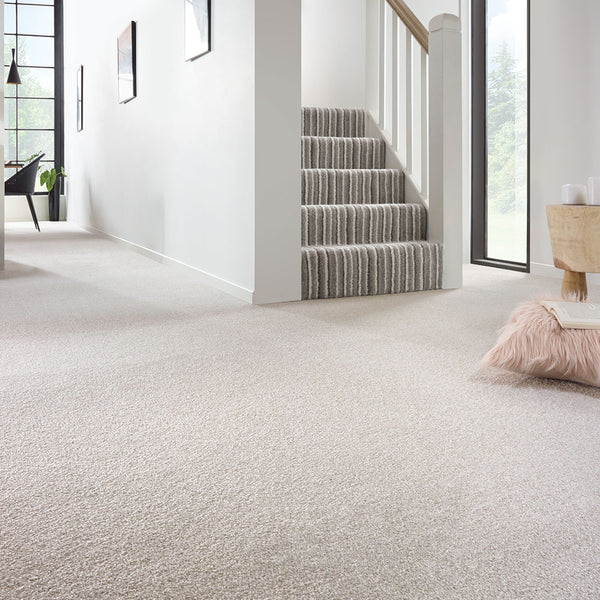
Carpets can be a great addition to any home, providing comfort underfoot and adding colour and texture to a room. However, carpets also receive a lot of wear and tear from daily use.
If you have felt backed carpet or are considering installing it in your home, you may be wondering just how long it will last before needing replacement.
There are several factors that influence the lifespan of felt backed carpeting. By understanding what affects the durability and longevity of carpet, you can make choices that will help maximise the usable life of your flooring investment. Read on to learn more about how long you can expect felt backed carpet to last.
What Is Felt Backed Carpet?
Before diving into lifespan and durability, it helps to understand exactly what felt backed carpet is. Felt backing is a common type of carpet backing material used on residential broadloom carpets. It is made of densely packed fibres that are matted together.
The felt backing is adhered to the underside of the carpet pile. It helps provide cushioning underfoot and absorbs noise for a quieter floor. The dense fibre mat also offers strength, structure and durability to support the face carpet fibres.
Other common carpet backings include woven polypropylene, latex foam rubber and sponge rubber. However, felt backing is a popular choice for its affordability and performance. It is often used in bedrooms, hallways, living rooms and other standard residential spaces.
Now that you know what defines felt backed carpet, let’s look at some of the factors that determine its expected lifespan.
Quality of Carpet Fibres
One of the biggest influences on carpet longevity is the type of fibres used to create the carpet pile. Broadloom carpet can be constructed from synthetic fibres like nylon, polyester and polypropylene or natural fibres like wool. The fibre quality greatly impacts appearance retention and resistance to matting and crushing.
Nylon Carpet Fibres
Of all carpet fibres, nylon is the most durable and resilient. Nylon carpets hold up well to foot traffic and offer excellent bounce-back. They resist matting, crushing and wear for an extended usable life. A quality nylon carpet with proper maintenance can last 10-15 years or longer before needing replacement.
Polyester & Polypropylene Carpet Fibres
Carpets made from polyester or polypropylene fibres are more affordable, but are not as sturdy and long-lasting as nylon. Polyester carpets maintain their appearance well initially, but the fibres tend to flatten over time.
Polypropylene carpets are prone to matting. Most polyester and polypropylene carpets last just 5-8 years with typical use. Higher quality versions may extend to 10 years with proper care.
Wool Carpet Fibres
Wool carpet fibres are quite durable, resilient and soil resistant. However, wool carpets are less common in homes due to the higher cost. Well-maintained wool carpets can easily last 10-15 years before replacement is needed. The main downside is that wool can be prone to moths or carpet beetles over time.
Carpet Pile Density
The density or thickness of the carpet pile also affects durability. Carpets with a dense, plush pile resist matting and crushing better than low-pile indoor/outdoor type carpeting.
Consider the following pile densities:
- Low pile – Less than 3/8 inch pile height – 5-8 years lifespan
- Medium pile – 3/8 to 1/2 inch pile height – 8-10 years lifespan
- Plush pile – Over 1/2 inch pile height – 10-15 years lifespan
All else being equal, thicker, plusher carpets last longer than thin, low profile carpeting. That said, very thick, shag-style carpeting can be prone to matting from foot traffic. There is a sweet spot around 1/2 inch thickness that balances durability and resistance to matting.
Amount of Foot Traffic
The location of the carpet within a home has a big impact on wear and lifespan. Carpets in high traffic areas like hallways and stairs will need replacing much sooner than carpet in bedrooms or guest rooms.
On average, expect the following lifespan based on traffic volume:
- Light traffic – Guest rooms, bedrooms – 8-15 years
- Moderate traffic – Living room, dining room – 5-10 years
- Heavy traffic – Hallways, stairs – 3-7 years
Rotating furniture to distribute wear patterns can help extend carpet life in any room. Area rugs in high traffic zones are also useful for protecting the carpet underneath.
Regular Carpet Maintenance
Keeping your carpets well maintained with regular care is key for maximising longevity. Follow these tips:
- Vacuum frequently – 2-3 times per week for heavy traffic areas
- Have carpets professionally deep cleaned every 12-18 months – Helps revitalise carpet fibres
- Spot clean spills and stains promptly – This prevents setting and permanent damage
Consider hiring the professionals, obviously you should look at hiring a local firm, for example, if you are based near Crosby in Liverpool then search online for “professional carpet cleaners in Crosby” or similar. You then want to check all reviews and pictures of their work, in this example Ascend PC seem to be a great fit, very professional and great reviews!Well cared for carpets may last 50% longer between replacements compared to neglected carpets.
Proper Carpet Installation
Improper installation can lead to rippling, wrinkling or delamination, shortening the usable life of carpet. Have your carpet installed by reputable professional installers following the manufacturer’s guidelines.
Key installation factors that affect durability include:
- Cushion – Use proper cushion or padding for longevity.
- Seam joints – Seams should be securely bonded for strength.
- Stretching – Carpet should be firmly stretched over the padding with no ripples.
- Edges – Edges should be anchored firmly for a tight fit.
With quality installation and materials, the carpet itself will wear out long before problems occur at the seams or edges.
Signs Your Felt-Backed Carpet Is Nearing End of Life
Even with regular care, all carpets eventually reach the end of their usable lifespan. Here are some telltale signs your felt-backed carpet is worn out:
- Thin, low pile – Carpet no longer has plush feel underfoot
- Severe matting – Fibres are smashed down and won’t rebound
- Wear pattern visible – Heavily travelled areas appear noticeably lighter
- Bald patches – Carpet has worn through completely in sections
- Musty odour – Carpet has permanent embedded moisture or mildew smell
- Backing visible – Carpet fibres so sparse the backing shows through
- Difficult to clean – Stains no longer lift out even with professional cleaning
If you spot these issues, it is usually time to replace the worn carpet with fresh new carpeting.
Factors That Shorten Carpet Lifespan
While regular care helps maintain your carpet, there are also some factors that can prematurely shorten its usable life. Watch for these issues:
- Pet accidents – Both urine and vomit stains can lead to premature wear and deterioration.
- Indoor smoking – Smoke residue causes yellowing and can accelerate wear.
- Excessive moisture – Repeated spills or flooding leads to mould and mildew.
- Improper cleaning – Overwetting carpets or using harsh cleaners damages fibres.
- Furniture indentations – Heavy furniture crushes and mats fibres.
- Sun exposure – Direct sunlight fading and weakens fibres.
Addressing these factors helps ensure your carpet lasts for its expected lifespan based on quality and traffic.
Signs It’s Time for New Carpet
While it’s possible to extend carpet life through diligent care, eventually all carpets reach the point where replacement is needed for improved appearance and performance.
Besides the obvious signs of worn, matted fibres and visible backing, here are some other indicators it’s time to replace carpet:
- Loose, rippled or detached seams
- Edge unravelling or coming loose
- Spots or stains that won’t lift after professional cleaning
- Pervasive musty or mouldy odour
- Sections that don’t lie flat and show bubbling
If your carpet shows any combination of these signs, it’s likely at the end of its usable life. Shopping for fresh new carpet can rejuvenate the look and feel of the room.
Average Carpet Lifespan by Fibre Type
Based on all the factors discussed, here are the typical lifespans you can expect from different carpet fibre types:
- Nylon carpet – 7-15 years
- Polyester carpet – 5-8 years
- Polypropylene (olefin) carpet – 5-8 years
- Wool carpet – 8-15 years
Properly maintained nylon or wool carpets usually last the longest. Poor quality polyester and polypropylene wear out faster.
Maximising Your Carpet Investment
To get the most out of your carpet purchase, choose the right fibre, density and construction quality for your needs. Speak to a reputable carpet retailer about performance and durability.
Then care for your carpeting properly with regular vacuuming, prompt stain treatment and periodic professional deep cleaning. With proper selection and maintenance, you can maximise the years of service you get from felt backed carpets.
When to Replace Carpet
While it’s possible to extend carpet life with good care, once your carpeting starts showing signs of advanced wear, it’s time to replace it for improved appearance, hygiene and comfort. Budget for average carpet life expectancies when planning your flooring needs.
I hope this overview gives you a better understanding of the factors that determine felt backed carpet longevity. Let me know if you have any other carpet care questions!


